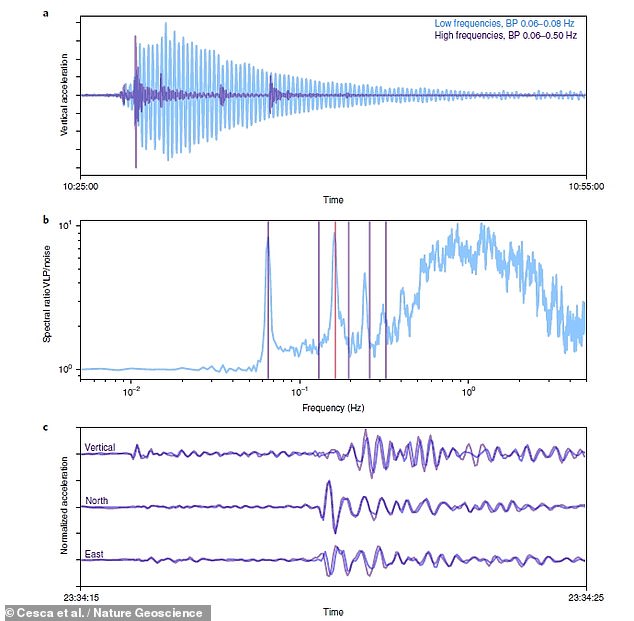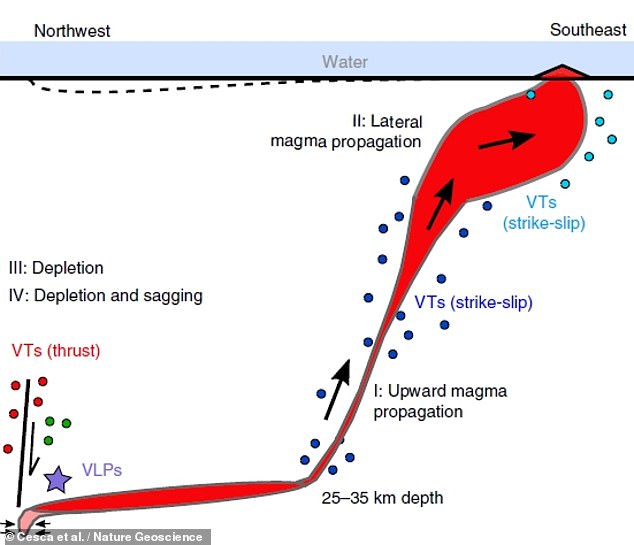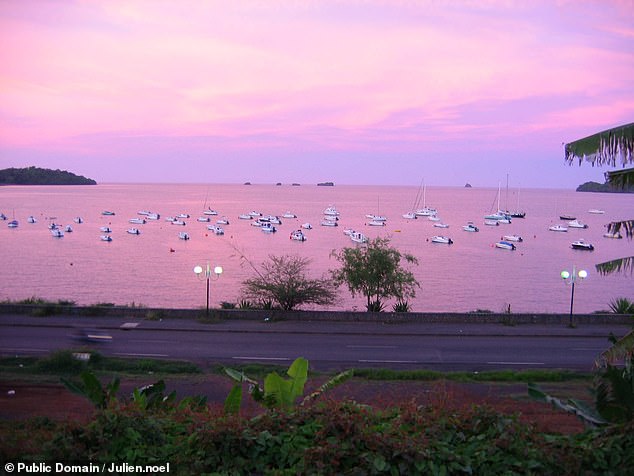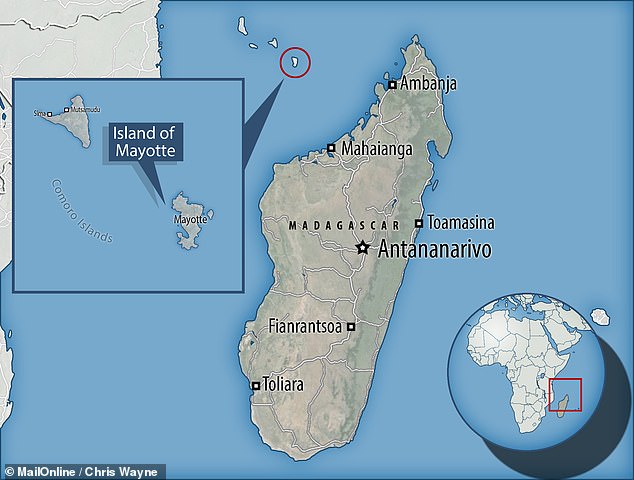Mysterious seismic ‘hums’ detected around the world have been traced back to a magma-filled reservoir lying deep underneath the Indian Ocean.
The weird humming signals — of which more than 400 were detected — were first picked up by earth scientists in late 2018 but their origins had been unknown.
Researchers led from Germany believe that the signals were generated by the movement of magma at depth as a new underwater volcano was born.
Scroll down for video

Mysterious seismic ‘hums’ detected around the world, pictured, have been traced back to a magma-filled reservoir lying deep underneath the Indian Ocean
The mystery of the seismic humming began when seismographs around the world picked up signals of thousands of earthquakes — including an unexpectedly-large magnitude 5.9 event — striking near Mayotte in the May of 2018.
Following this, a series of unusual hums were detected in the November of the same year — some of which lasted up to 40 minutes.
These signals, researchers noted, ‘trigger[ed] the curiosity of the scientific community’ — with suggestions the hums might have been connected to a new, 3.1 mile (5 km) -wide underwater volcano that was detected in the area the next year.
To investigate, geoscientist Simone Cesca of the German Research Centre for Geosciences (GFZ) in Potsdam and colleagues analysed seismic records of the hums from across the globe.
They found that there was likely two broad stages in the creation of the new volcano.
In the first, molten rock pushed upwards diagonally from a 9 mile (15 kilometre) -wide magma reservoir until it reached the seafloor, generating the submarine eruption.
During this subsurface-activity, the magma ‘triggered energetic earthquakes along its path to the surface,’ Dr Cesca told Live Science.
‘In fact, we reconstructed the upward migration of magma by following the upward migration of earthquakes.’

Researchers led from Germany believe that the signals were generated by the movement of magma at depth as a new underwater volcano was born, as shown in this illustration
Once the magma had forced a route to this surface, the researchers explained, such became a conduit along which more molten rock could flow and build up the emergent volcano on the seafloor.
As this occurred, the magma reservoir below naturally began to empty of material — causing the nearby island of Mayotte to sink by nearly 8 inches (20 centimetres) and cracks to develop in the rocks directly above the shrinking reservoir.
‘An analysis of the very-long-period seismicity and deformation suggests that at least 1.3 square kilometres of magma drained from a reservoir of 10 to 15 km diameter at 25 to 35 km depth,’ the researchers wrote.
As the reservoir’s roof increasingly failed and fractured, it created small resonant earthquakes — the mysterious humming signals which the scientific community had noted, the researchers explained.

The weird humming signals — of which more than 400 were detected from near the island of Mayotte, pictured — were first picked up in late 2018 but their origins had been unknown
Even though the volcano has now been formed, there is still the possible that further earthquakes might be felt in the area, the researchers noted.
‘There are still possible hazards for the island of Mayotte today,’ said paper author and geophysicist Torsten Dahm of the GFZ.
‘The Earth’s crust above the deep reservoir could continue to collapse, triggering stronger earthquakes.’
The full findings of the study were published in the journal Nature Geoscience.

The mystery of the seismic humming began when seismographs around the world picked up signals of thousands of earthquakes — including an unexpectedly-large magnitude 5.9 event — striking near Mayotte in the May of 2018